
法国Moléculaires d’Orsay科学研究所
ISMO / KAAN Architecten
由专筑网李韧,邢子编译
来自建筑事务所的描述:Moléculaires d’Orsay科学研究所(ISMO)由KAAN Architecten事务所设计建造。建筑位于巴黎西南方向20公里的de Saclay高原。这座研究所成立于2010年,其中包含有3个研究实验室,主要研究分子物理与物理化学。研究所隶属于巴黎某高校,共有170名合作者。ISMO与Matière et Rayonnement体育中心相合建,并且分为物理实验室、教育大楼、国际研究者接待中心三个部分。
Text description provided by the architects. The Institut des Sciences Moléculaires d’Orsay (ISMO) has recently moved into new premises designed by KAAN Architecten. The building is located on the Plateau de Saclay, 20 km south-west of Paris. Initiated in 2010, and born of the fusion of three research laboratories, this higher institute for molecular physics and physico-chemistry, under the supervision of Université Paris-Sud and CNRS, employees a staff of 170 collaborators. ISMO merges with the Centre de Physique Matière et Rayonnement, grouping physics laboratories, an educational building and a reception centre for international researchers.

全新的ISMO大楼位于巴黎萨克雷大学内,校园面积约600公顷。这座建筑集教育、研究、创新理念为一体,其中结合有宿舍、服务用房,以及办公场所。建筑与城市的主要名称结合在这座城市校园的设计之中,同时这座建筑也成为了全球最具发展潜力的建筑群体。该项目面积约10000平方米,建筑呈矩形,也是该地区发展的重要组成部分。
The new ISMO building is located within the Paris-Saclay Campus, an urban campus spread over nearly 600 hectares. Dedicated to higher education, research and innovation, this mixed vicinity is accompanied by housing, services and offices. Major names in architecture and urbanism have been involved in the design of this urban campus, and have contributed to making it one of the eight most promising global clusters. The monumental rectangular building of 10.000 square metres designed by KAAN Architecten is a remarkable component in this original architectural development.
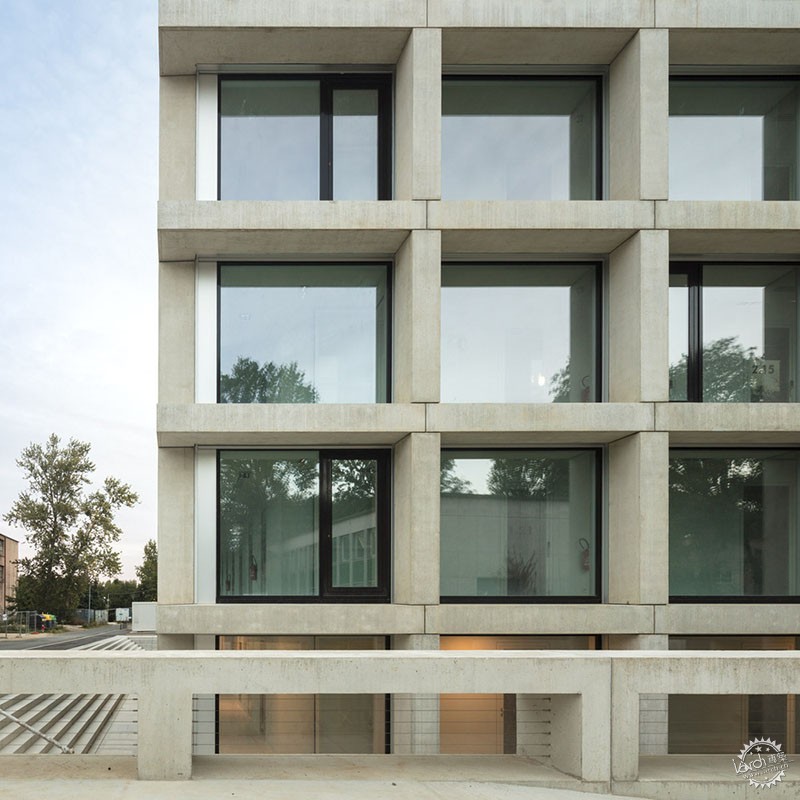
建筑的设计遵循这样一个原则,即ISMO的工作人员能够在建筑中享受工作过程,他们就似乎漫步在建筑周围的公园与森林之中。因此,该项目代表了城市与乡村布局的融合,并且在全新的混凝土结构中融合了起伏的山坡景观。从Rue André Rivière至前侧院落有着一段宽阔的台阶与坡道,地面上铺设着混凝土砖,让整座建筑充满意大利宫殿的气息。
A basic design principle has guided the Dutch firm: that ISMO staff should be able to experience their journey to and through the building like a walk in the park and the ancient forest surrounding the building. In fact, the project represents an exemplary integration of an urban-meets-rural layout with the new concrete structure emerging from the forest within an undulating landscape of rolling hills. A broad flight of steps and a ramp wind from Rue André Rivière to a forecourt. Both are paved in concrete tiles, giving the whole ensemble the charm of an Italian palazzo.
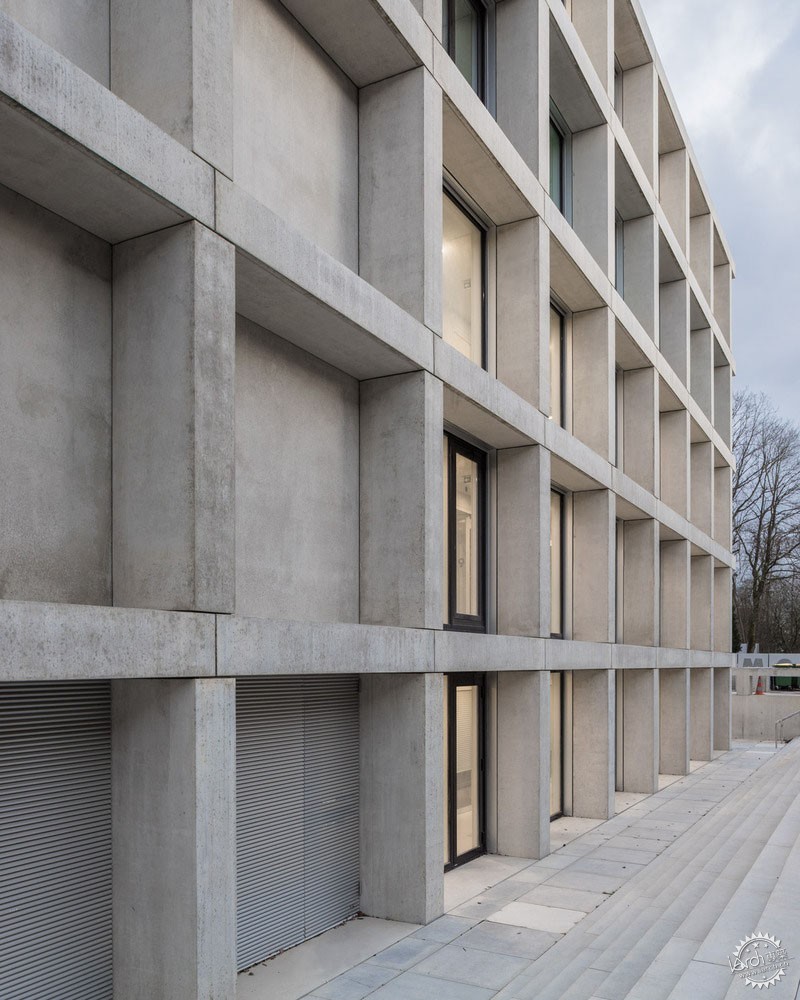

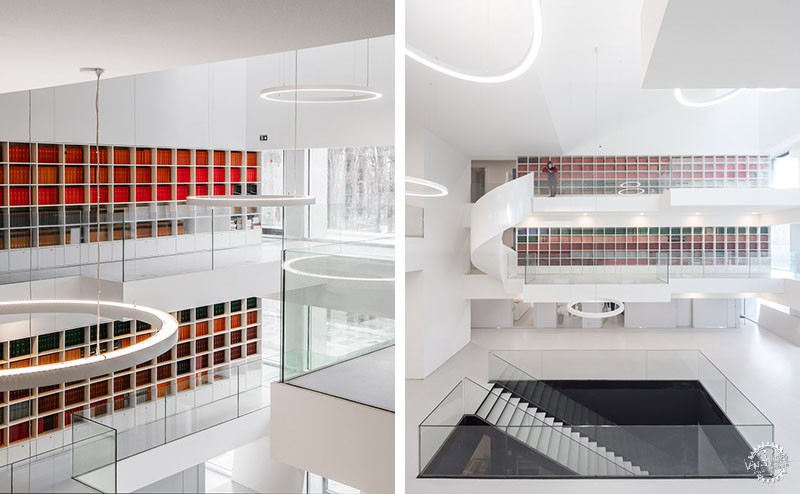
ISMO大楼分为两个部分,但它们相互结合。其中一个部分存放有激光设备、光谱仪等其他先进的科研设施,另一个则主要用作会议与办公,这里为工作人员打造了宁静的办公环境。
The ISMO building is divided into two architecturally expressed realms, intertwined into a single entity. One area contains lasers, spectrometers and other advanced scientific instruments, and the other comprises smart, quiet meeting and office spaces that provide calm working conditions and promote concentration.
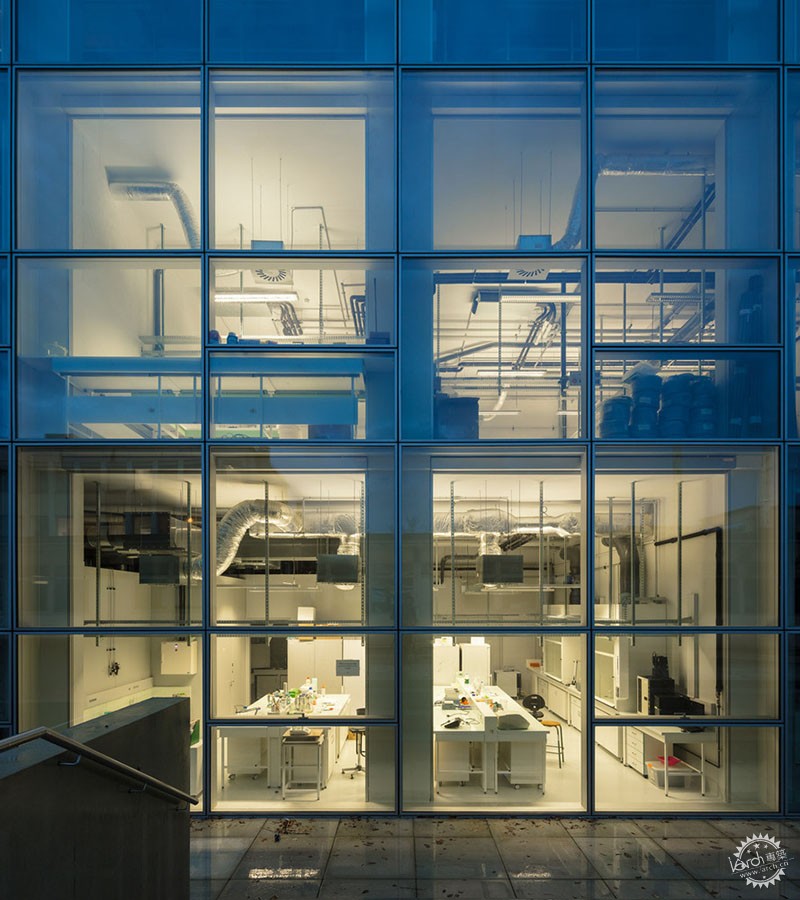
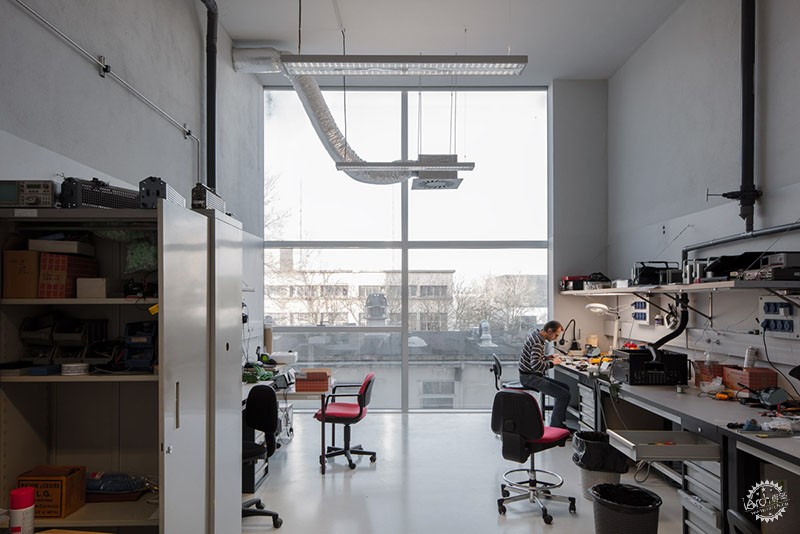
实验室需要尽可能地避光使用,因此位于北向的长边,在玻璃幕墙的后侧。建筑南侧主要是办公场所,混凝土支柱和门框形成矩形图案,网格状形态突出立面约80厘米,而巨大的落地玻璃让使用者能够感受到周边的景观。建筑的入口位于立面的中央,与周边的玻璃形成鲜明对比,同时,整个入口也轻微地向前侧延展。
While the laboratories, which scarcely admit daylight, are situated on the long, north-facing side of the building behind a sleek curtain wall, the southern facade houses the office areas, where sturdily stacked concrete posts and lintels form a pattern of rectangles. The grid stands out for its glazed, niche-like infills, set 80 centimetres deep into the facade. The vast floor-to-ceiling windows offer stunning views of the surrounding landscape. The entrance, situated in the middle of this facade, is made immediately evident by the deviation of pattern and the glazed entryway, which has been lightly brought forward.

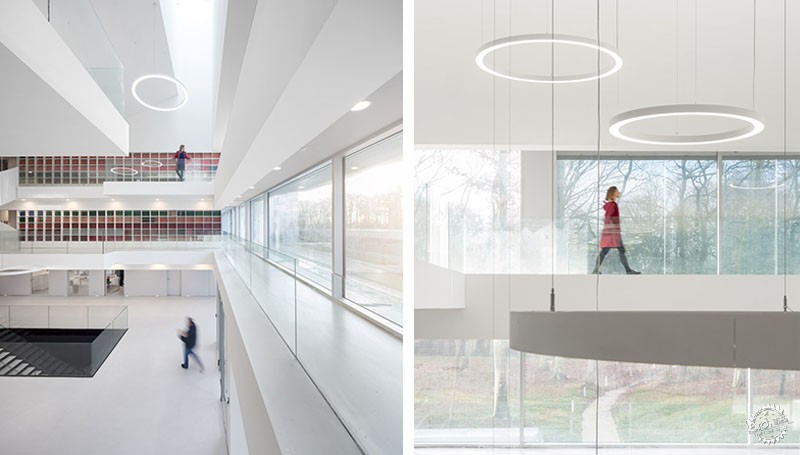
进入建筑之后,一个白色的空间一直延伸向屋顶。太阳光穿过中厅进入室内。中厅空间设置有接待区、咖啡厅,以及楼梯等交通空间,使用者通过楼梯可以来到下方的实验室和停车场。在入口的右侧,图书馆的墙体向上延伸至二层,而这些空间则通过封闭的螺旋楼梯相互连接。在上部,使用者可以在矩形露台上沟通与交流。阳光、空间、视野的紧密结合共同形成了宽阔的空间感受。
Entering the building, a clear white space unfolds and extends up to the roof. Daylight floods the atrium through the facade and a large skylight. The atrium features a reception desk, a cafeteria and a wide staircase descending to laboratories and the parking garage. To the right of the entrance, a library wall stretches over two storeys, connected by an enclosed spiral steel staircase. Pointing upwards, rectangular balconies project into the space as comfortable settings for conversations and exchange of ideas. The cohesive combination of daylight, spaciousness and sightlines creates a grand spatial effect.
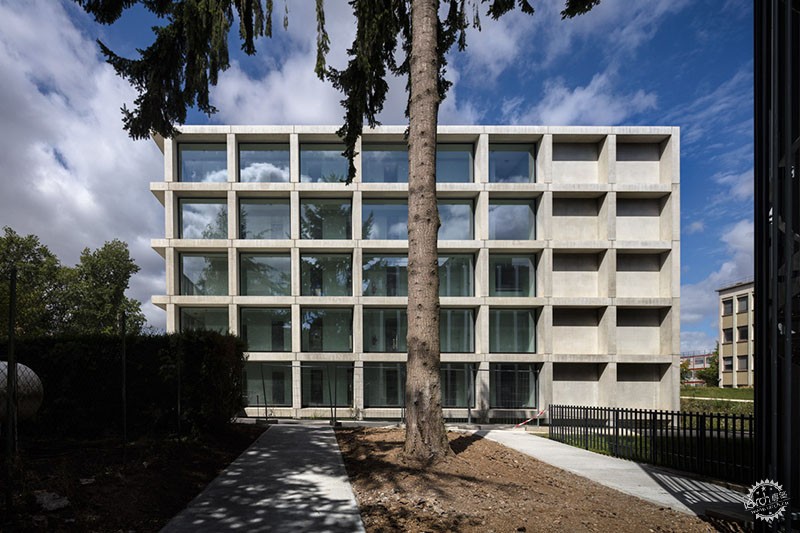
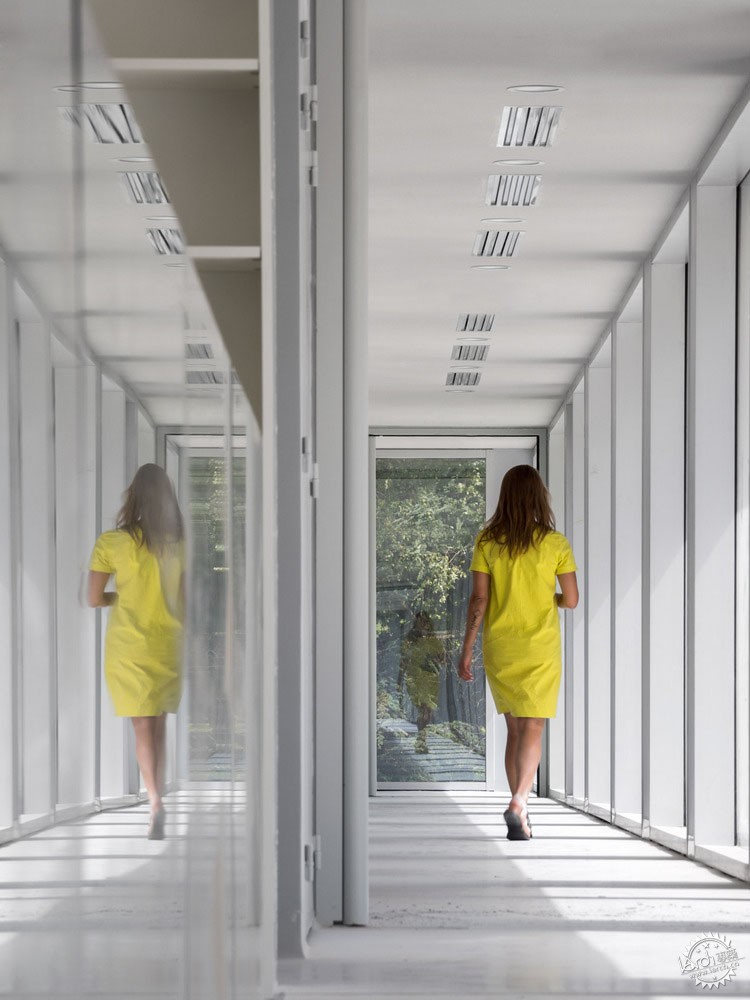
在办公区域,立面后方的走廊贯穿所有楼层,而工作空间则环绕两个院落而排布,因此,庭院为办公室带来自然采光的同时也保障了工作的隐私性。
In the office areas, corridors run immediately behind the facades, across all the floors, and the working spaces are situated around two spacious courtyards that provide natural light and have been strategically designed for purposes that require a certain degree of privacy.
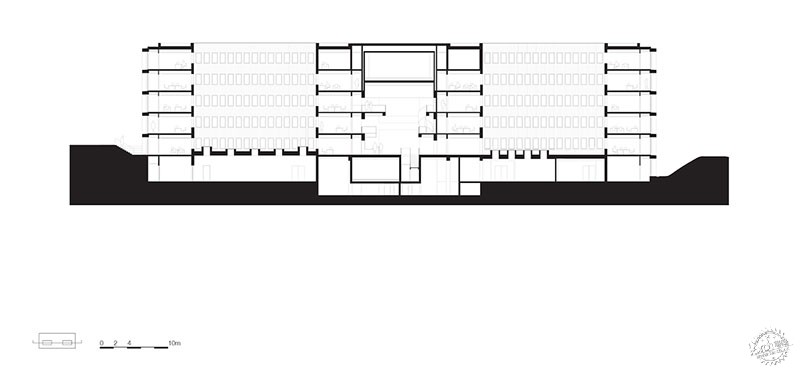

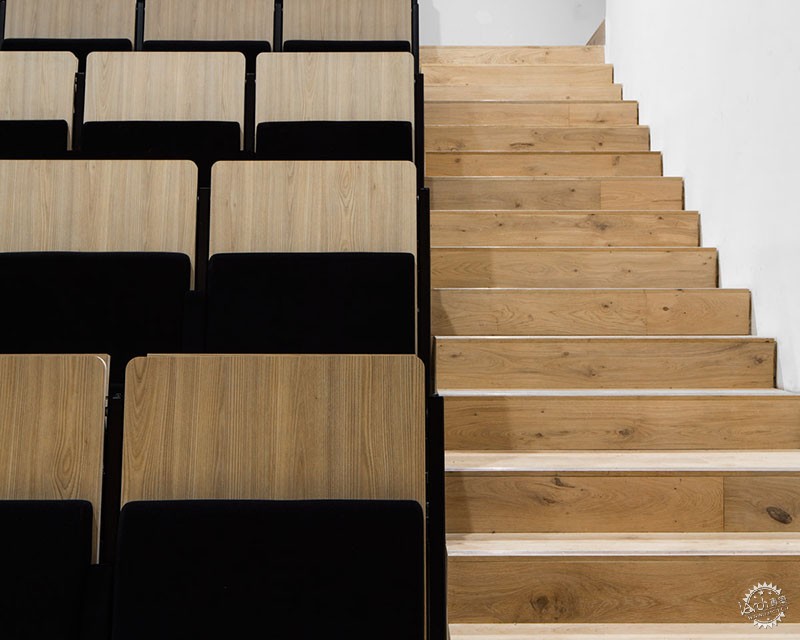
除了实验研究和数据处理,这座建筑还具有学术教育的功能,因此学术礼堂如同一个巨型盒子一样悬挂在三至四层,礼堂的座椅区形成缓坡,能够很好地反射光线,与天窗完美地结合在一起,礼堂内部则覆盖着橡木饰面。
Alongside laboratory research and data processing, the building accommodates academic education through an auditorium that is suspended like a box over the atrium at levels 3 and 4. The sloping underside of the seating area is a perfect complement to the skylight, as it reflects and doubles the light. Inside, the auditorium is warmly cladded with oak.
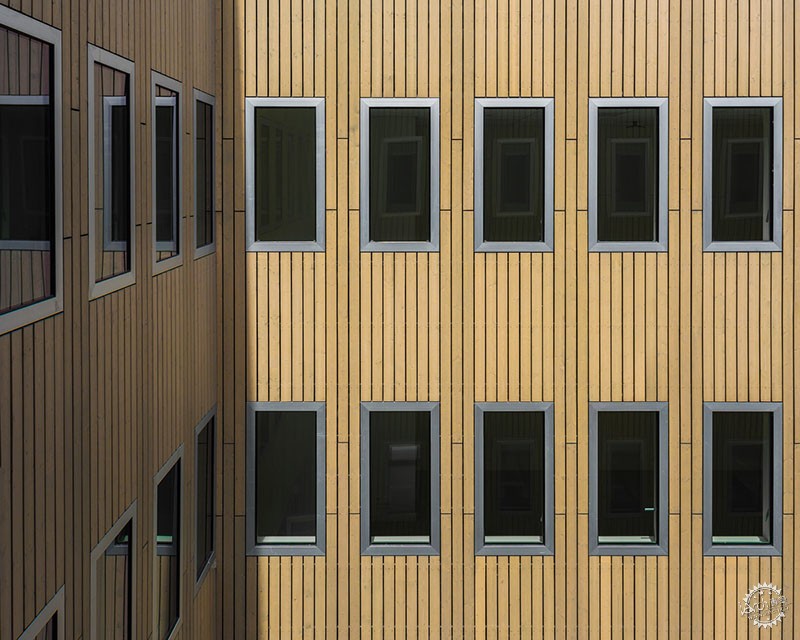
建筑的立面十分统一,前侧的矩形和凹槽从角落一直延伸到侧立面,然后在末端形成结尾序列。这种设计方法让互补策略和建筑功能结合在一起。
The building is unified by a consistent facade treatment. The rectangles and deep recesses of the front extend around the corners to the side facades and continue all the way to the end corners. The inclusive frontage strategy unites the complementary approaches and activities that coexist within the institution.

KAAN Architecten事务所秉持着精准且富有表现力的功能主义,再结合复杂的理念,在多个住宅项目和多功能建筑中运用了这样的设计思路,这些项目遍布法国里尔、南特,以及巴黎。另外,里尔的Chambre de Métiers et de l’Artisanat将于2019年初正式向公众开放。
KAAN Architecten’s subtle yet expressive functionalism, with its undertones of sophistication, is also at the core of several residential blocks and multi-purpose buildings, which are currently under construction in Lille, Nantes and Paris. Moreover, the monolithic Chambre de Métiers et de l’Artisanat in Lille will open its doors at the beginning of 2019.


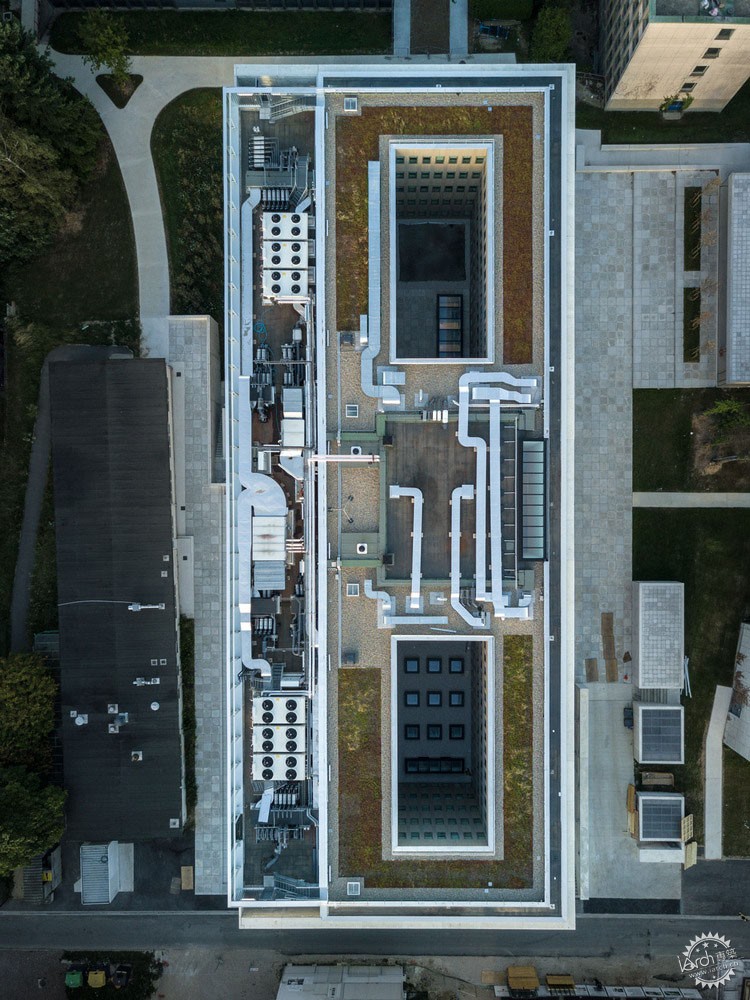
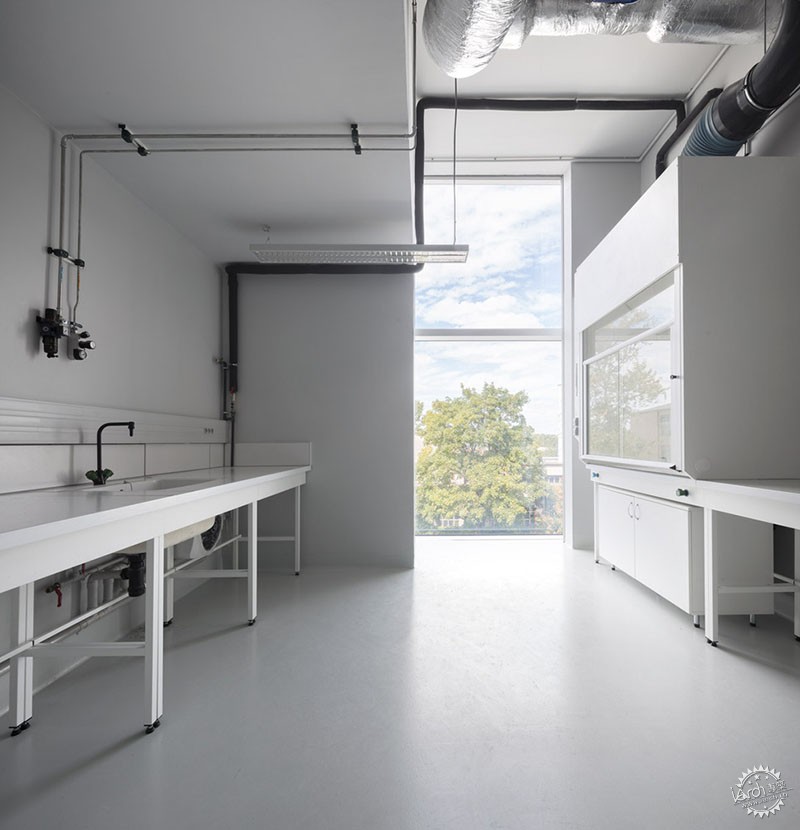
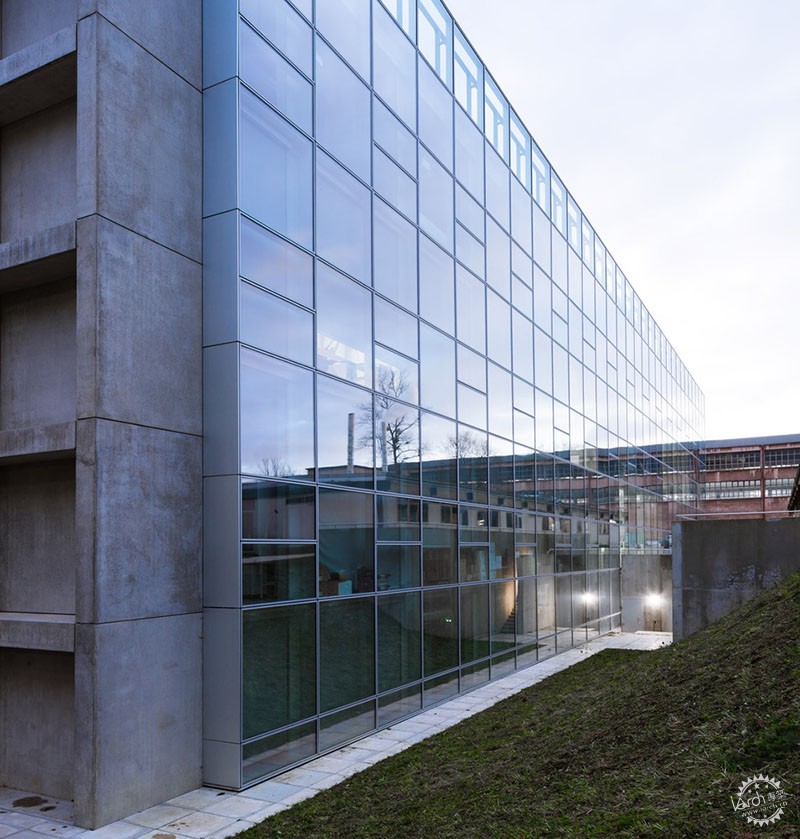
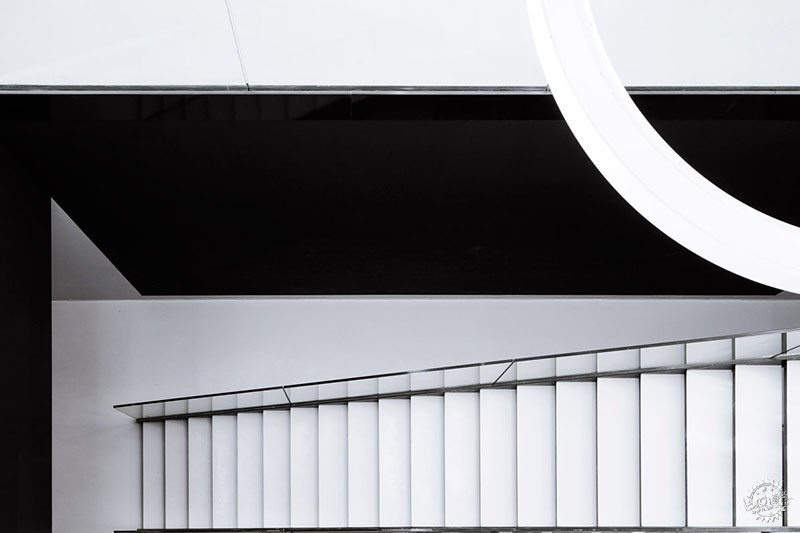
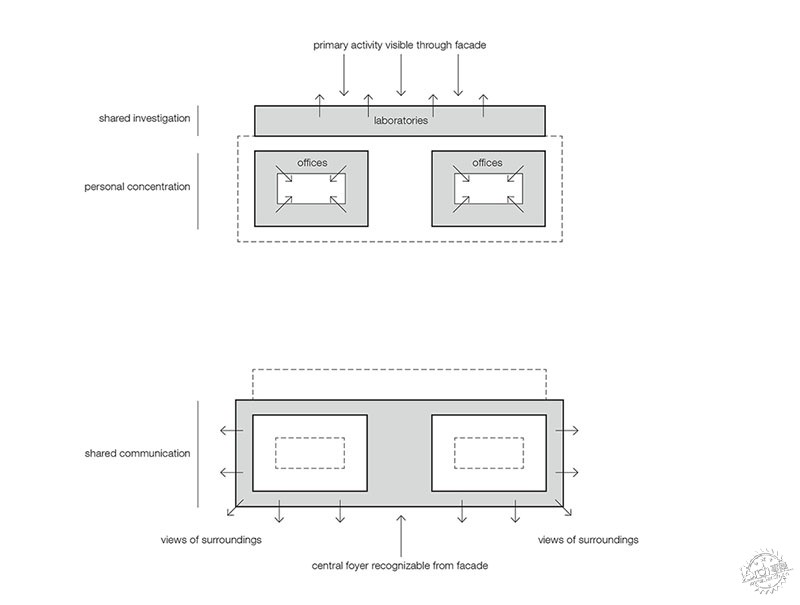
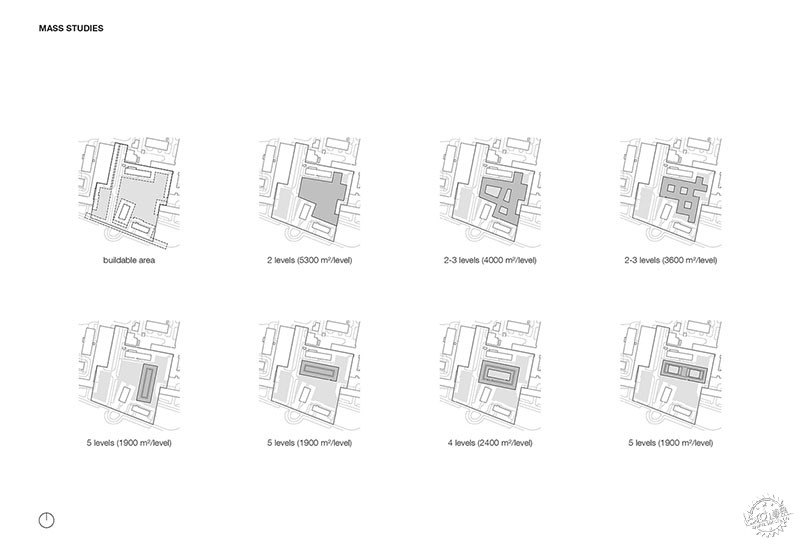

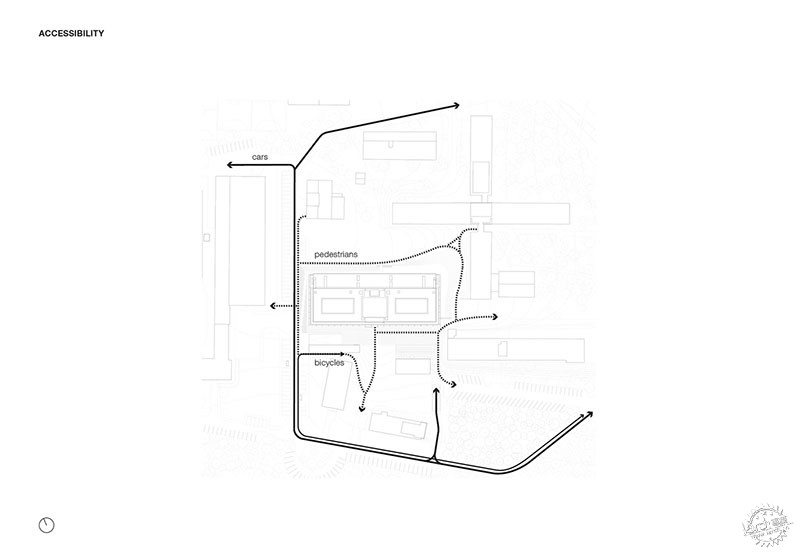
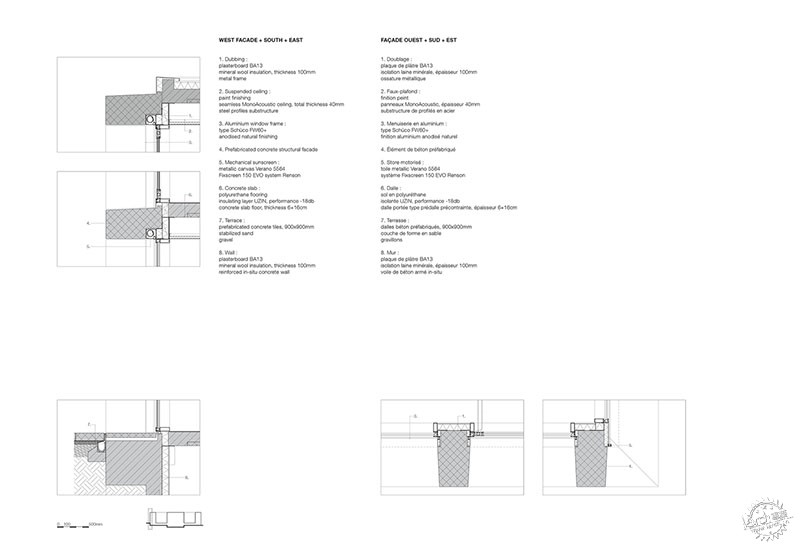
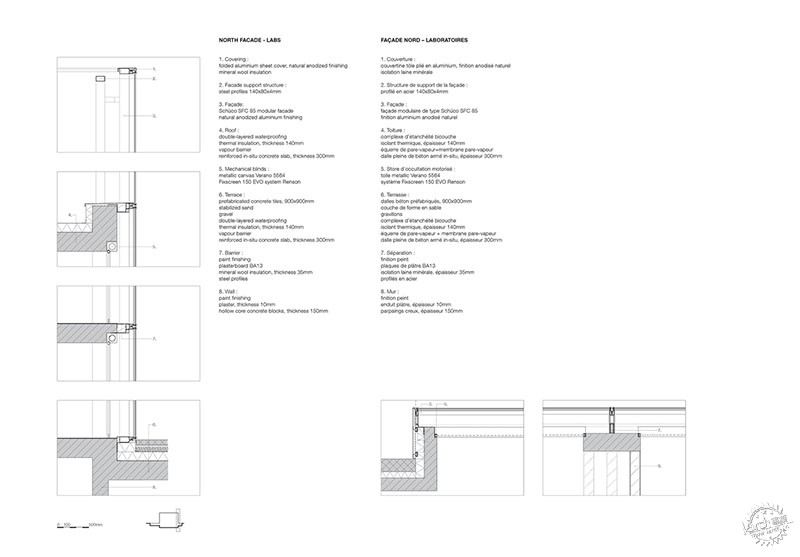

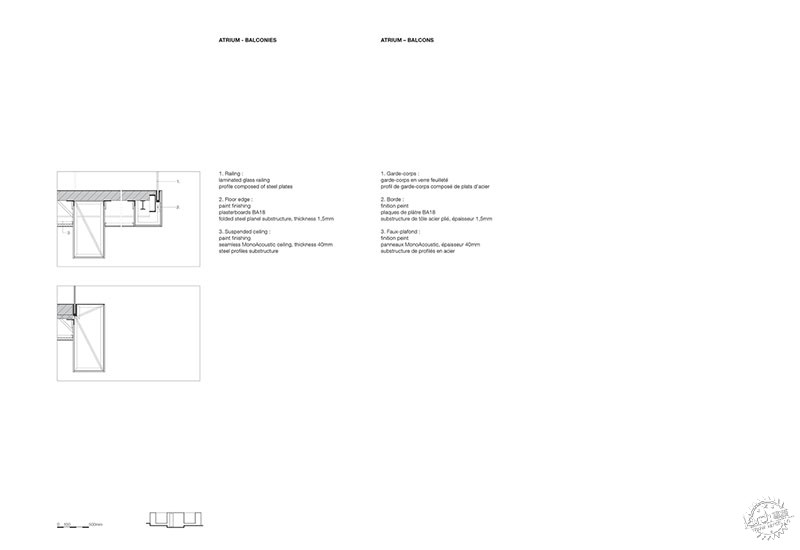

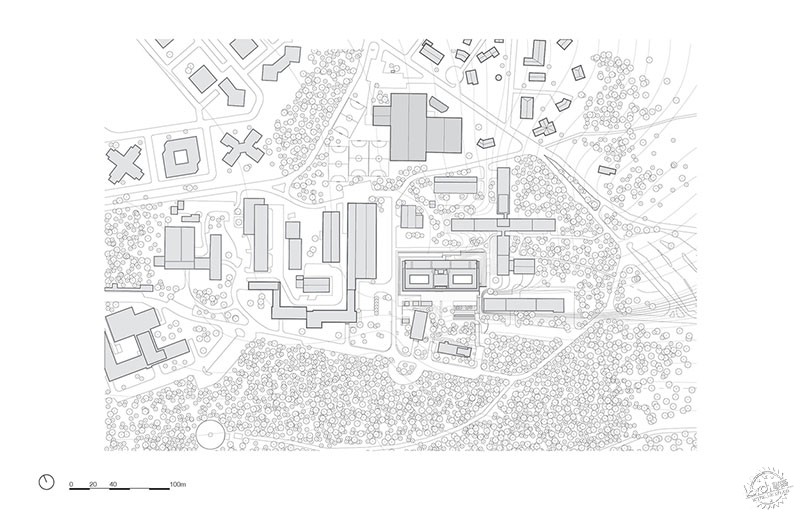
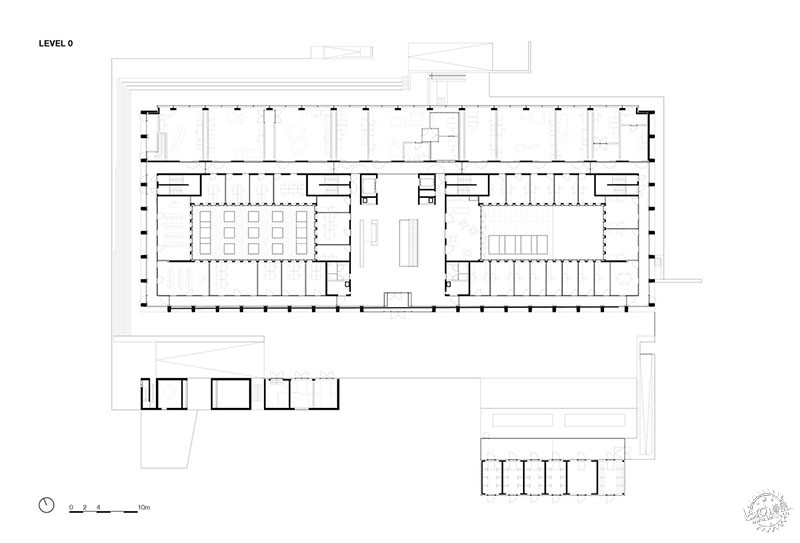

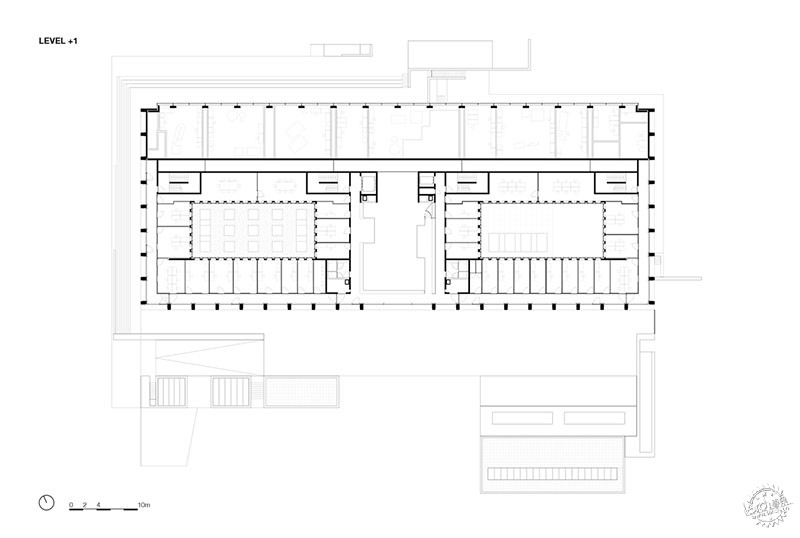



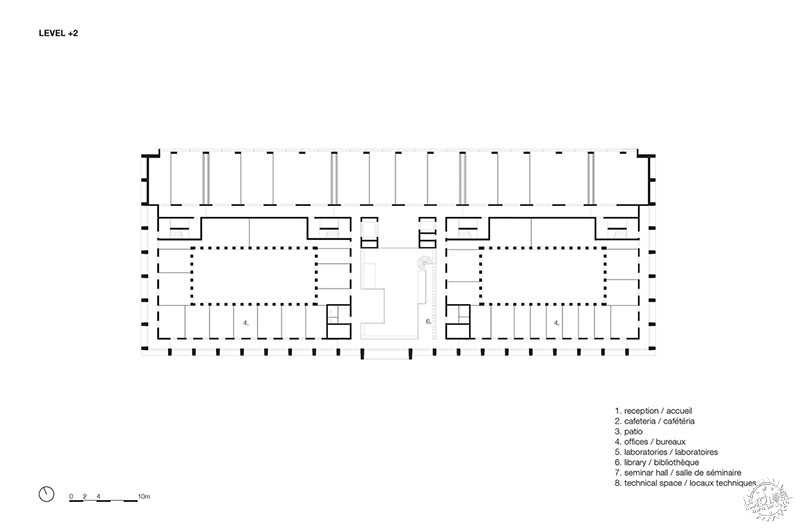

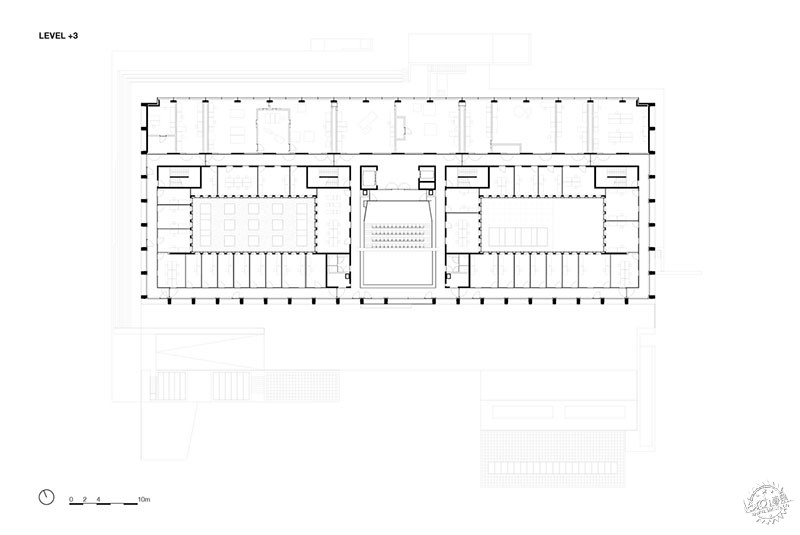

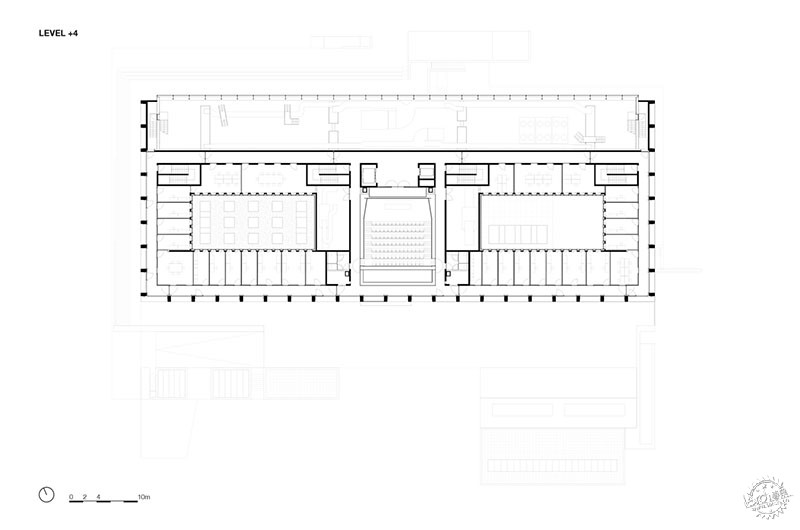
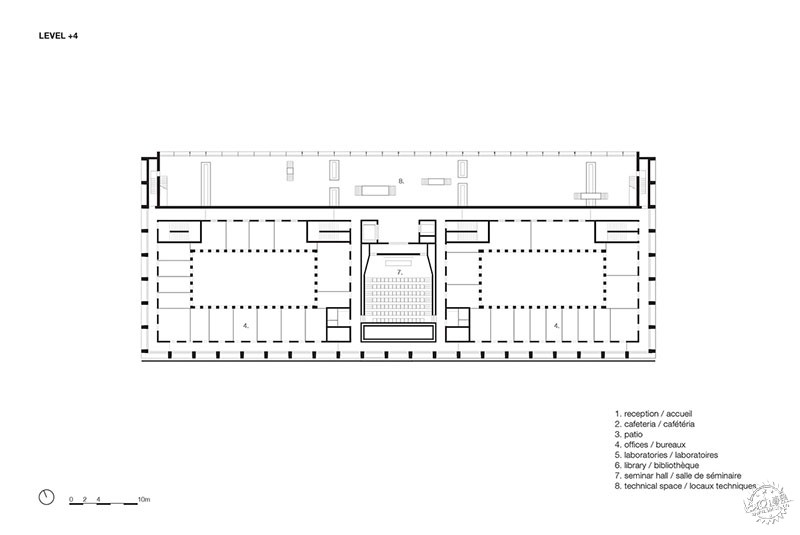


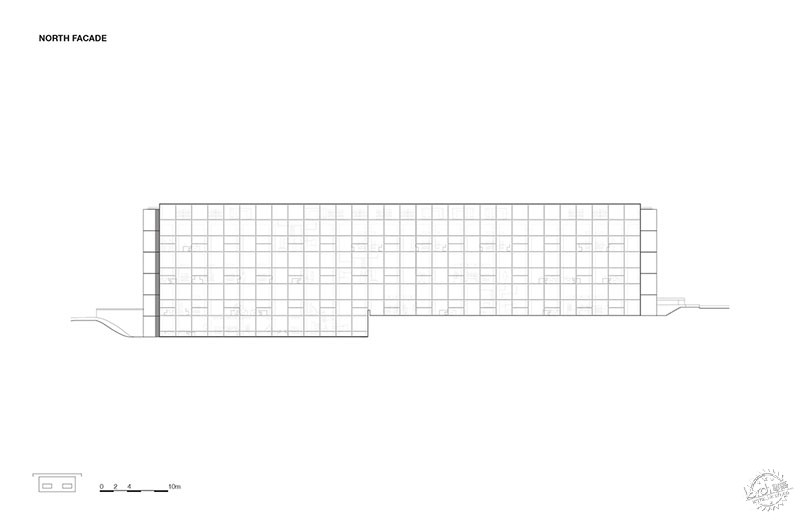
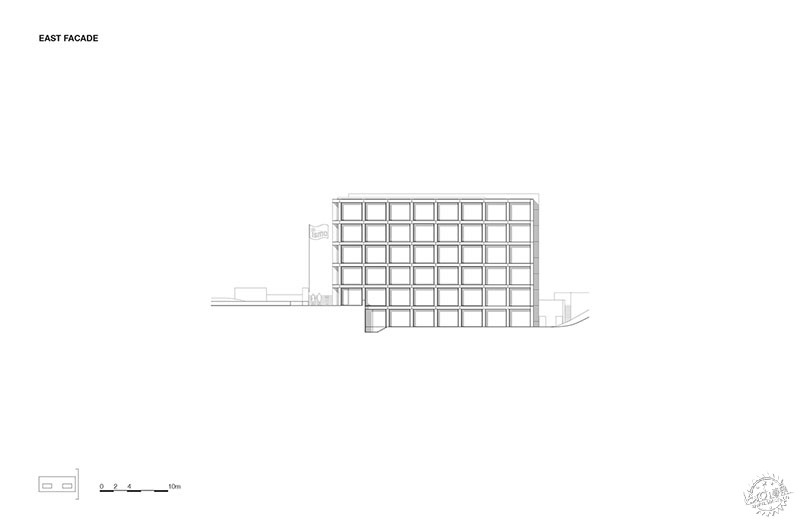
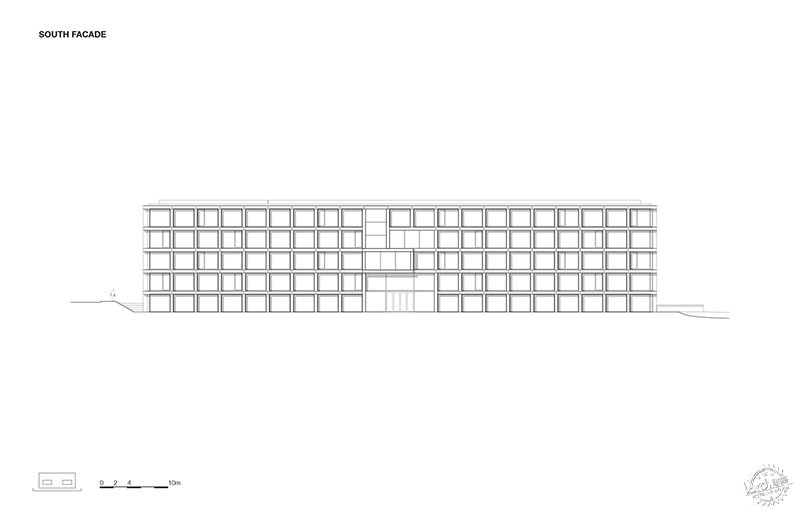
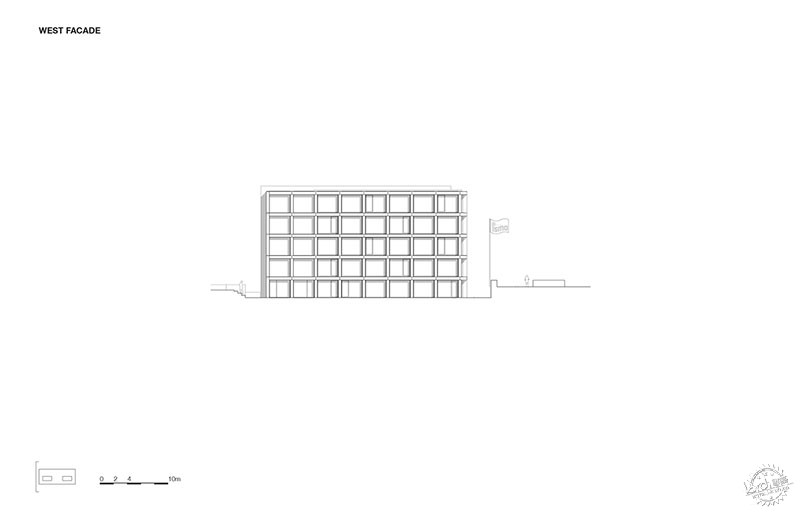
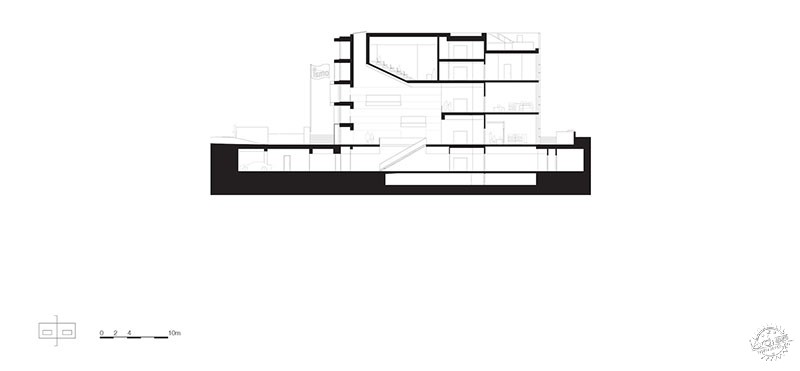
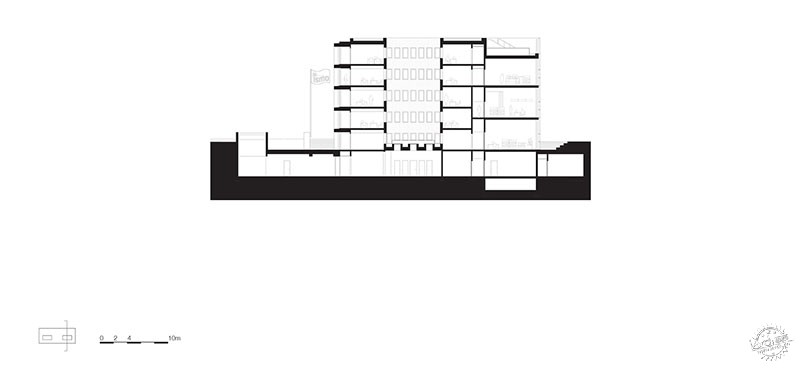
建筑设计:KAAN Architecten
地点:法国,奥尔赛
KAAN Architecten主创建筑师:Kees Kaan, Vincent Panhuysen, Dikkie Scipio
项目团队:Christophe Banderier, Marc Coma, Aksel Coruh, Sebastian van Damme, Paolo Faleschini, Renata Gilio, Walter Hoogerwerf, Jan Teunis ten Kate, Marco Lanna, Ismael Planelles Naya, Ana Rivero Esteban, Joeri Spijkers, Koen van Tienen, Pauline Trochu
当地联合建筑设计:巴黎FRES architectes
面积:10000.0 m2
项目时间:2018年
制造商:COFELY, Slam Metallerie
结构顾问:EVP Ingénierie, Paris
声学设计:Peutz & Associes, Paris
经济顾问:Bureau Michel Forgue, Apprieu
道路与公共设施:Servicad Ouest IDF, Cesson Sevigne
安装与可持续顾问:INEX, Montreuil
景观设计:KAAN Architecten
客户:Université Paris-Sud
建筑造价:20.000.000 欧元
Architects: KAAN Architecten
Location: Batiment 520, Rue André Rivière, 91400 Orsay, France
KAAN Architecten: Kees Kaan, Vincent Panhuysen, Dikkie Scipio
Project Team: Christophe Banderier, Marc Coma, Aksel Coruh, Sebastian van Damme, Paolo Faleschini, Renata Gilio, Walter Hoogerwerf, Jan Teunis ten Kate, Marco Lanna, Ismael Planelles Naya, Ana Rivero Esteban, Joeri Spijkers, Koen van Tienen, Pauline Trochu
Associated local architect: FRES architectes, Paris
Area: 10000.0 m2
Project Year: 2018
Manufacturers: COFELY, Slam Metallerie
Structural advisor: EVP Ingénierie, Paris
Acoustics: Peutz & Associes, Paris
Financial advisor: Bureau Michel Forgue, Apprieu
Roads & Utilities: Servicad Ouest IDF, Cesson Sevigne
Installation and Sustainability advisor: INEX, Montreuil
Landscape: KAAN Architecten
Client: Université Paris-Sud
Building costs: 20.000.000 €
|
|
